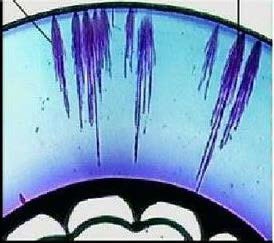Tech Briefs
Savannah River National Laboratory
Water Tree Detection Method: Leading/Lagging Cable Referencing Platform for Monitoring the Health of Underground Cable Networks
Savannah River National Laboratory has developed a system for detecting water trees before they cause underground electrical cables to fail.
Need
Historically, the power industry has preferred overhead transmission lines over underground cables because overhead lines are easier and cheaper to install and maintain. The popularity of underground cables has nonetheless been on the rise in recent years because in some climatic and demographic environments, the advantages of underground cables offset the greater difficulty and expense of their installation and maintenance. Those advantages include resistance to damage from hurricanes and tornadoes and saving space in locations with high population densities.
The main cause of failure of underground cables is the water tree, which is a corrosion phenomenon that occurs under very humid conditions in the insulation of underground cables. Because unlike overhead lines, the health of underground cables cannot be determined by visual inspection without excavation, and because water trees rarely disrupt transmissions in their early stages of growth, an efficient means to detect water trees before they cause the failure of underground cables is needed.

Water tree growing from cable sheath to electrical conductor.
Benefits
- Assesses the health of underground cables without visual inspection
- Enables detection of water trees in the early stages of growth before they cause cable failure
Applications and Industries
- Electrical power industry
Description
SRNL’s system includes a pulse generator configured to inject a pulse into a first underground cable that branches into a second underground cable and a third underground cable. The system includes a first sensor associated with the first cable, a second sensor associated with the second cable, and a third sensor associated with the third cable. The system includes a control device configured to obtain a first, second, and third signal associated with the first, second and third sensors, respectively. The control device determines a lead-lag relationship between the second and third signals and determines presence of any water tree within at least one of the second and third cables based on the lead-lag relationship. When presence of a water tree is determined, the control device generates a control action associated with repairing or replacing the second and/or third cable.

Electrical cable destroyed by water tree.
Intellectual Property
- US Patent No. 11,177,055.
Download Tech Brief
Contact Information
Savannah River National Laboratory
E-mail: partnerships@srnl.doe.gov